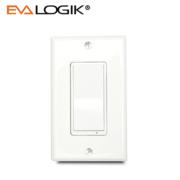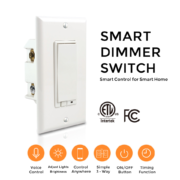The difference between WIFI Z-Wave ZigBee wireless transmission protocol
The difference between WIFI Z-Wave ZigBee wireless transmission protocol
The difference between WIFI Z-Wave ZigBee transmission
WiFi – Network Is the defacto IP wireless radio protocol
It operates in the 2.4Ghz and 5Ghz bands, although most home automation products are only available on 2.4Ghz. Any IP-compatible API can be used. Wifi has long range and high bandwidth, resulting in short battery life. The Wifi is one of the only protocols with sufficient bandwidth for video.
Wifi, as a standard, is capable of connecting 256 clients on a single network. In practice the numbers are usually much lower significantly. Many ISPs provide wireless routers with extremely resources, which effectively restricts them to 10-30 clients. Many people who use wifi as their main procol find a router upgrade necessary. Wifi devices pose risks other standards do not. Most wifi devices are cloud based, creating a potential gateway for malware (viruses, ransomware, etc) to get past firewalls.
With the exception of Thread and Bluetooth, none of the other protocols have the ability to interact directly with any of the devices on your home network or the internet, meaning the risk of a malicious device is limited to damaging the controller. It is recommended to use reputable vendors with a history of providing security updates and keep all devices on current firmware versions to mitigate issues. This is not a complete solution as devices have shipped with security holes or malware from 3rd party software (e.g. Solar Winds). You may wish to add a separate network for PCs and other devices. This will further reduce the risk but not eliminate it as wireless devices can change networks or create their own to spread infections.
Z-wave is an open standard managed by and licensed to members of the Z-Wave Alliance
All Z-Wave devices are required to go through 3rd party testing to confirm security and operational compliance with the standard Z-wave is a radio frequency mesh protocol operating in the 900MHz band. The frequency varies from country to country based on local laws. US products will not work in the EU, and EU products will not work in the US. Currently, Z-wave networks are limited to 232 nodes but future controllers with Z-wave LR will be able to support 4,000 nodes. The Z-wave radio modules can support these numbers. But some controllers may not have enough RAM/CPU resources to handle the automations on a network that large. High profile manufacturers are GE, Aeon Labs, Nortek/2gig/Linear and Enerwave. Several security systems (Ring, Vivint, GE, Honeywell) use or support Z-Wave due to its compliance testing.
Zigbee is a family of open wireless protocols based on IEEE 802.15.4 that is administered by the Connectivity Standards Alliance (CSA)
Zigbee is a mesh network using the the 2.4GHz band worldwide (the same as Bluetooth, 802.11b/g/n wifi routers and microwave ovens) as well as 868 MHz (Europe) and 902-928MHz (Americas and Australia). The Zigbee standard allows for networks of up to 65,000 nodes, however most consumer controllers only have enough memory for networks of 100-200 devices. Zigbee devices are not required to go through compliance testing, which has contributed to lower costs.
The Zigbee name, however, is trademarked and manufacturers must pay a license fee to use the Zigbee name and Logo. Notable Zigbee manufacturers include Hue, Sylvania and Xaoimi. There are three consumer Zigbee variants as well as a number of industrial or vendor-exclusive zigbee variants. Zigbee LightLink (ZLL) is limited to lighting products and was made popular by Hue bulbs. Zigbee HomeAutomation (ZHA) is a general purpose library with support for sensors, HVAC, locks and lighting. ZHA and ZLL are not directly compatible. Zigbee3 is the latest variant of Zigbee and supports both ZLL and ZHA devices. Due to the various approached manufacturers take, mixed Z3, ZHA and ZLL networks can have varied behavior.







